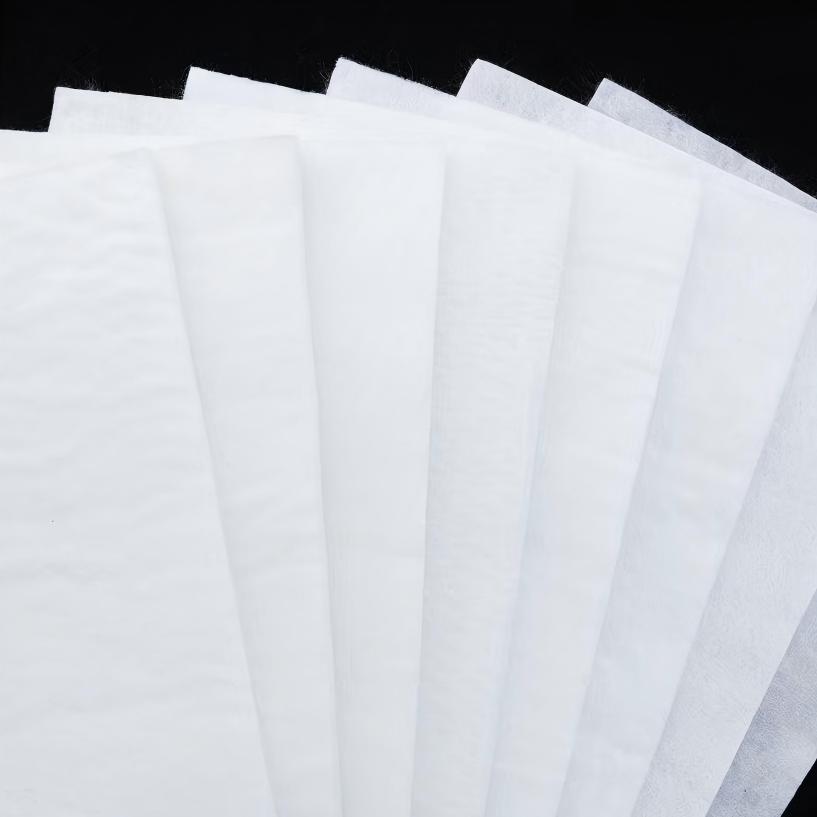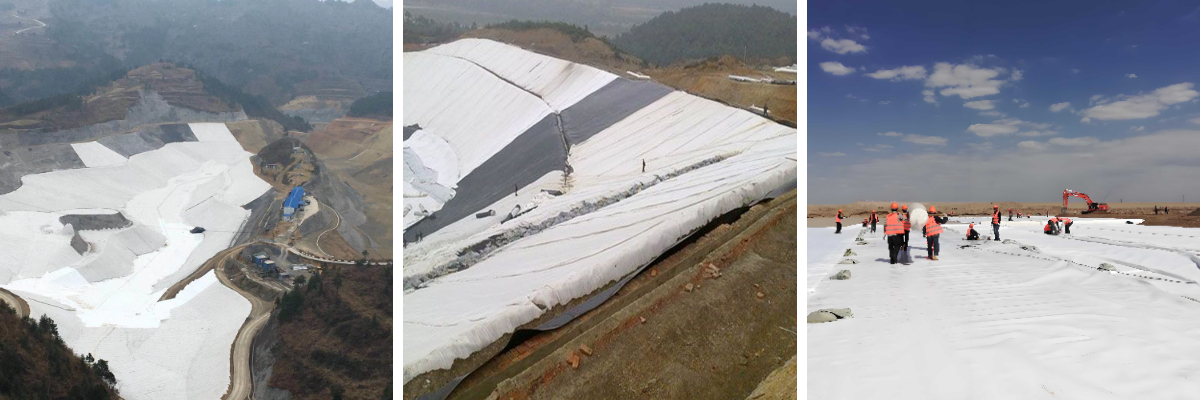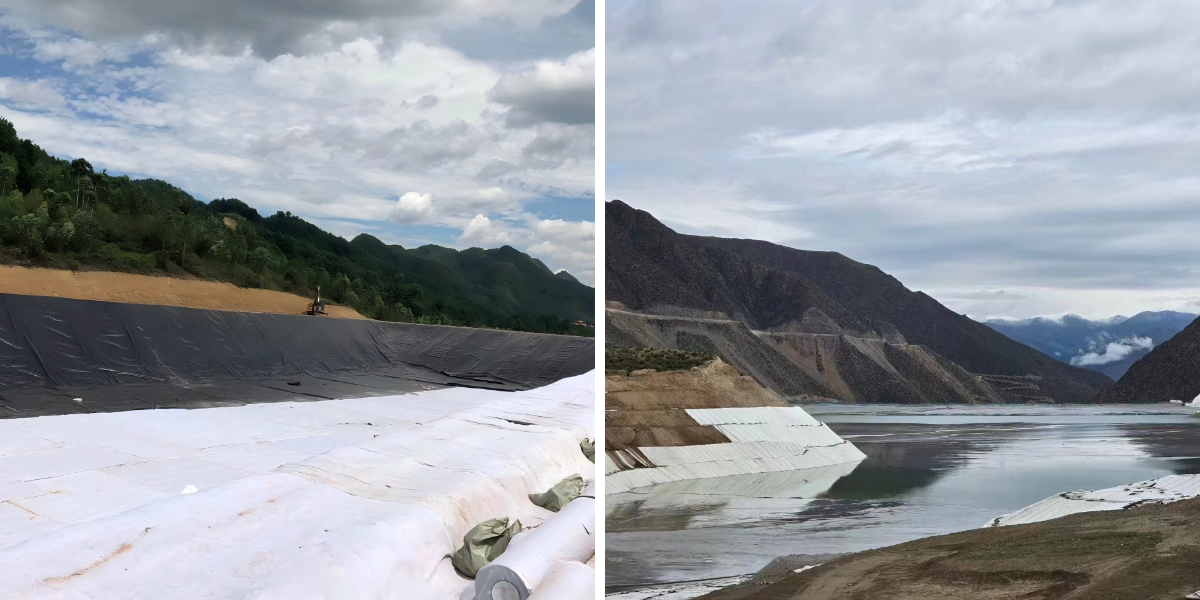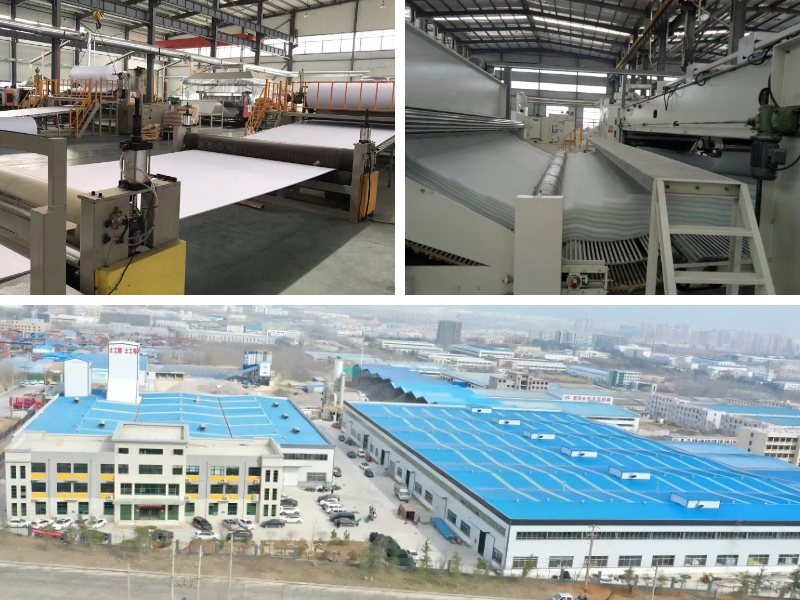Geotech Fabric
1. High strength and durability
Excellent tensile and tear resistance, especially for woven geotextiles, suitable for reinforcement projects. Synthetic fibers (polypropylene, polyester) are corrosion-resistant, resistant to microbial erosion, and have a long lifespan.
2. Permeable and filtering functions
Allow water to pass through while preventing soil particle loss, perfectly replacing traditional sand and gravel filters and saving costs.
3. Convenient and efficient construction
Lightweight, coil packaging, fast transportation and laying speed, low labor requirements, and adaptable to complex terrains.
4. Economic and Environmental Protection
Replace natural materials and reduce resource consumption. Reduce maintenance costs in the later stages of the project.
Product Introduction:
Geotech Fabric is a permeable geosynthetic material made from synthetic fibers such as polypropylene, polyester, polyethylene, etc., through processes such as needle punching, weaving, or thermal bonding. It is widely used in civil engineering, serving functions such as reinforcement, filtration, drainage, and isolation.
classification
1. Woven geotextile: made by interweaving two sets of parallel fibers or yarns, it has high strength and good tear resistance, and is commonly used in engineering parts that require high tensile strength, such as reinforcing roads and railway roadbeds.
2. Non woven geotextile: It is made by randomly arranging short fibers or long fibers and using methods such as needle punching, thermal bonding, or chemical bonding. It has good permeability, filtration, and insulation properties and is widely used in engineering fields such as drainage, filtration, and isolation.
3. Composite geotextile: composed of two or more layers of geotextile and one or several layers of non-woven fabric, or composite geotextile with other materials such as geomembrane, with multiple material properties such as anti-seepage, reinforcement, protection, etc. It is commonly used in water conservancy, environmental protection and other projects with high requirements for anti-seepage and reinforcement.
characteristic
1. High strength: Using plastic fibers, it can maintain sufficient strength and elongation in both dry and wet conditions, and can withstand large tensile and deformation forces.
2. Corrosion resistance: It can resist corrosion for a long time in soil and water with different acidity and alkalinity, and can adapt to various harsh natural and chemical environments.
3. Good permeability: There are gaps between the fibers, which have good water permeability, allowing water to freely penetrate while preventing the loss of soil particles, fine sand, etc.
4. Good antimicrobial properties: It is not damaged by microorganisms or insects, and has a long service life.
5. Convenient construction: The material is light, flexible, and easy to transport and lay, which can save a lot of manpower, material resources, and time.
Product Parameters:
project | metric | ||||||||||
Nominal strength/(kN/m) | |||||||||||
6 | 9 | 12 | 18 | 24 | 30 | 36 | 48 | 54 | |||
1 | Longitudinal and transverse tensile strength / (kN/m) ≥ | 6 | 9 | 12 | 18 | 24 | 30 | 36 | 48 | 54 | |
2 | Maximum elongation at maximum load in longitudinal and transverse directions/% | 30~80 | |||||||||
3 | CBR top penetration strength /kN ≥ | 0.9 | 1.6 | 1.9 | 2.9 | 3.9 | 5.3 | 6.4 | 7.9 | 8.5 | |
4 | Longitudinal and transverse tearing strength /kN | 0.15 | 0.22 | 0.29 | 0.43 | 0.57 | 0.71 | 0.83 | 1.1 | 1.25 | |
5 | Equivalent aperture O.90(O95)/mm | 0.05~0.30 | |||||||||
6 | Vertical permeability coefficient/(cm/s) | K× (10-¹~10-), where K=1.0~9.9 | |||||||||
7 | Width deviation rate /% ≥ | -0.5 | |||||||||
8 | Unit area mass deviation rate /% ≥ | -5 | |||||||||
9 | Thickness deviation rate /% ≥ | -10 | |||||||||
10 | Thickness coefficient of variation (CV)/% ≤ | 10 | |||||||||
11 | Dynamic perforation | Puncture hole diameter/mm ≤ | 37 | 33 | 27 | 20 | 17 | 14 | 11 | 9 | 7 |
12 | Longitudinal and transverse fracture strength (grab method)/kN ≥ | 0.3 | 0.5 | 0.7 | 1.1 | 1.4 | 1.9 | 2.4 | 3 | 3.5 | |
13 | Ultraviolet resistance (Xenon arc lamp method) | Longitudinal and transverse strength retention rate% ≥ | 70 | ||||||||
14 | Ultraviolet resistance (fluorescence UV lamp method) | Longitudinal and transverse strength retention rate% ≥ | 80 | ||||||||
Product Applications:
1. Water conservancy engineering: used for dam foundation reinforcement, groundwater drainage in drainage slabs, seawall, river embankment, lake embankment compliance engineering, reservoir reinforcement engineering, reclamation engineering, flood prevention and rescue, etc., to improve the stability and safety of dam bodies, prevent soil erosion and leakage.
2. Transportation Road Engineering: It can be used for anti-seepage and diversion reinforcement under ballast, anti-seepage reinforcement of culverts and tunnels, slope protection and soft foundation reinforcement treatment of highways and railways, etc., to improve the bearing capacity and service life of roads and ensure the safe operation of roads and railways.
3. Environmental protection engineering: effectively prevent the spread of pollutants in the anti pollution treatment of waste sites; In scenarios such as petrochemical systems, chemical wastewater tanks, refinery wastewater tanks, electroplating acid pickling tanks, etc., it plays a role in preventing seepage and corrosion, protecting the environment.
4. Construction engineering: used for reinforcing and anti-seepage treatment of building foundations, improving the stability and safety of buildings; It also plays an important role in waterproofing projects such as basements and roofs.
Geotextile has become an irreplaceable material in modern civil engineering due to its advantages of lightweight, high cost-effectiveness, and multifunctionality, especially suitable for projects with high environmental requirements or limited construction conditions.












